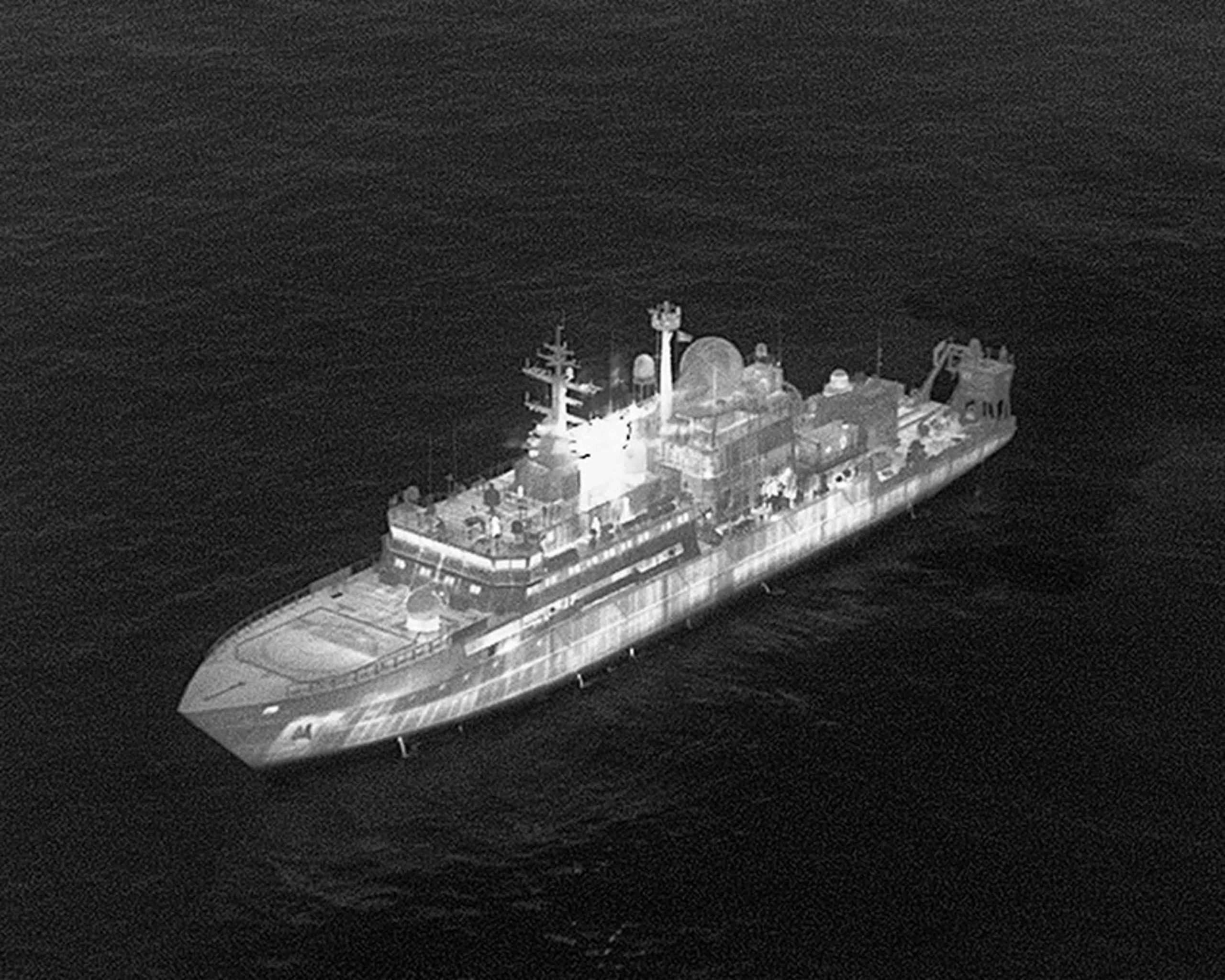


Far from being a diplomatic curiosity, this is a brazen escalation — and yet, the government’s response has, somewhat predictably, so far has been too cautious. If Britain is serious about defending its undersea infrastructure and protecting its sovereignty, it must prepare to hit back, hard.
To call what happened “dangerous” is an understatement. Defence Secretary John Healey revealed that Yantar, operated by the Russian Main Directorate of Deep-Sea Research (GUGI), was shadowed by a Royal Navy frigate and RAF P-8 surveillance aircraft — during which lasers were directed at British pilots. According to Healey, this is not a benign research mission: Yantar specialises in mapping undersea cables — vital arteries for the UK’s communications and energy systems — and potentially sabotaging them in wartime.
This is not a coincidence or a miscalculation on Russia’s part. The repeated visits by the Yantar, including earlier in the year, suggest a deliberate pattern of probing and pressure. Worse, using lasers against aircraft is not harmless. According to naval experts, such systems can be used to dazzle, disorient or even damage pilots’ eyesight — a hostile act that veers well beyond simple intelligence-gathering.
In his address, Healey warned that Britain is now living in a “new era of threat” and said he had revised the Navy’s rules of engagement so that Yantar can be tailed more closely. He also insisted that “military options” are ready if the vessel moves south. All well and good — but vague promises and tighter surveillance will not deter a determined adversary whose doctrine already regards undersea infrastructure as a strategic battleground.
Consider the stakes: critical data cables running beneath the waves carry enormous economic, security, and communication value. A hostile state that can not only map but possibly compromise these routes poses a direct threat to the UK and its NATO allies. If Moscow is serious about sabotage, Britain cannot continue to treat Russian naval activity as a nuisance; it must be treated as a strategic assault.
So what should Britain do? The time has come for deterrence, not dithering. Here are four essential steps:
1. Escalated Naval Posture
The Royal Navy must adopt a more aggressive shadowing strategy. The current reliance on a single frigate is insufficient. Britain should deploy additional surface assets — and potentially subsurface — to signal unambiguously that Yantar’s every move is being watched and will be challenged.
2. Submarine Warnings Have Real Impact
In a previous encounter, a British nuclear-powered submarine surfaced near Yantar, making clear that it had been tracking it. This kind of assertive posture should be institutionalised: routinely sending submarines into shadowing roles would force such vessels to think twice about operating so provocatively close to UK territory.
3. Economic and Diplomatic Costs
Britain must impose real costs for such intelligence missions. This could include sanctions on a wider set of individuals and corporate entities linked to GUGI, stricter port restrictions, and public exposure of the long-term risks posed by undersea cable surveillance. Diplomacy must be backed by coercive levers, not just words.
4. Strengthen NATO Cooperation
This is not merely a British problem — it is a NATO problem. London should work with allies to share intelligence on such Russian operations and develop a coordinated undersea defence strategy. Joint patrols, undersea sensors, and anti-sabotage tactics would raise the bar for Russian incursions and make the Atlantic and North Sea far less permissive.
Some may argue that this is a magnetic—but legal—Russian research vessel operating in international waters. But that argument misses two critical points.
First, the use of lasers against aircraft is not innocent. This is a hostile act, not a scientific curiosity. Second, undersea cables are vital national infrastructure; any effort to map or tamper with them is inherently a security threat. London may not yet have proof of sabotage — but the risk is existential enough to demand a robust counter.
Moreover, complacency invites escalation. If Moscow realises that the UK is only willing to shadow and observe, it may escalate its activities to test the limits of British patience. A bolder posture would push back the strategic margin, forcing Yantar and its handlers to think twice before engaging in further provocations.
Of course, there are dangers in overplaying this hand. If Britain somersaults into overtly aggressive behaviour near Yantar, it could risk a crisis. Naval confrontations, submarine surfacings and targeted sanctions may provoke public outcry or even diplomatic fallout.
But that danger is far outweighed by the risks of inaction. A passive defence invites more probing, which may eventually turn into sabotage. A deliberate and measured but resolutely forceful posture reduces risk — because deterrence only works when the adversary believes you will act, not just monitor.
When Healey declared: “We see you. We know what you’re doing. And we are ready,” he was not merely warning the Kremlin — he was also setting a test. But now he must follow that rhetoric with reality.
This is not the moment for grand statements alone. It is the moment for clear, concrete action. Britain must update its doctrine, deploy more assets, and collaborate with NATO to secure the deep sea.
If Moscow believes that the Yantar can loiter around British waters and shine lasers at pilots with impunity, then no deterrence posture is truly credible. Britain must demonstrate that such provocations will not go unanswered — not just in speeches, but in steady, unyielding capability.
Let this be a turning point. Not an invitation to escalate, but a declaration of resolve: Britain’s undersea domain is not a playground. It is a core dimension of national security — and we must defend it with the strength, clarity, and determination it demands.